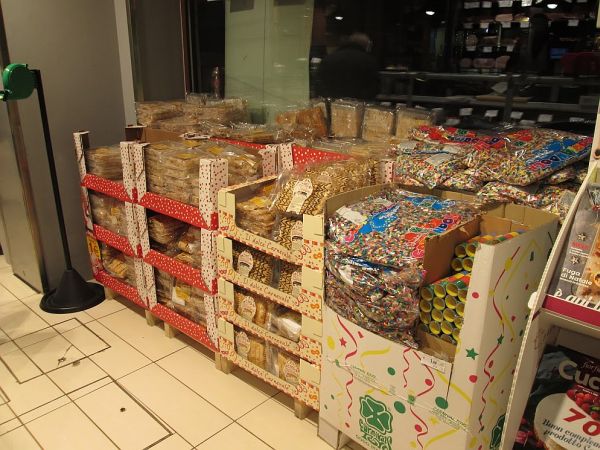Because I am, as usual, spinning in circles at the last minute with everything still to do, I am making the most of my blog to wish all my readers and subscribers the happiest holidays and the best New Year ever!
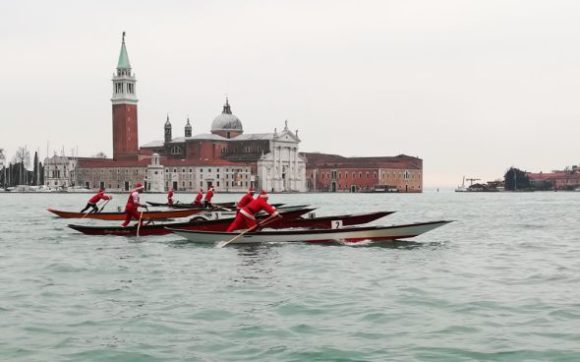
Because I am, as usual, spinning in circles at the last minute with everything still to do, I am making the most of my blog to wish all my readers and subscribers the happiest holidays and the best New Year ever!

Last Sunday the people of Malamocco celebrated the annual festa of the Madonna di Marina. Like a few other festivals — the one at Pellestrina on the first Sunday of August comes to mind — it is based on a legend involving a miraculous apparition of the Madonna. I’ll get to that in a moment.
What is reliably involved each year at Malamocco is a small sale of old and often eccentric stuff. I would say “antiques,” but that might be glamorizing them too much.
So forget the glamour, and while you’re waiting in line to pick up your plate of spaghetti alla malamocchina (with tiny clams called bevarasse), feast your eyes and your memory on this item. Anybody under the age of 50 probably has no recollection of it, but for the rest of us, I’m betting it still can bring on the shudders.
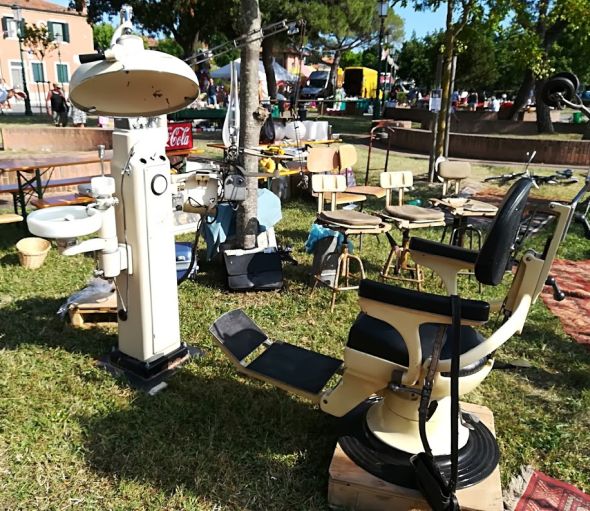
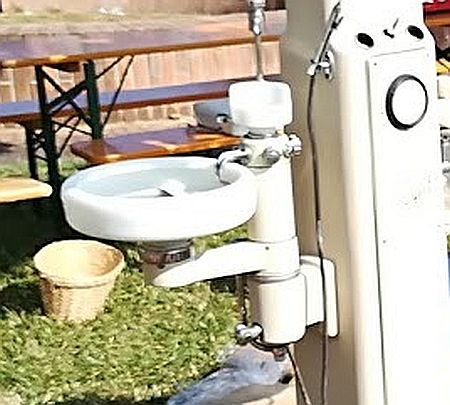
Speaking of Malamocco, you might want to know that the name is derived from Metamauco, by way of Medoacus, the Roman name of the Brenta River, which emptied into the Adriatic here. Could be useful on a crossword puzzle sometime?
It was originally a small settlement of families who cultivated vegetables, fished, and worked in the salt pans. The population grew in 452 A.D. with the fleeing dwellers from the lagoon shoreline seeking refuge from Attila’s Rome-bound hordes. It became the seat of the Venetian government between 742 and 811. In that year the new doge, Agnello Partecipazio, moved what was becoming Venice to the Rialto area and Malamocco returned to its earlier dimensions.
As for the Madonna di Marina herself, a legend springing from around the year 1300 tells of a certain Felice Dario, native of Malamocco, who found an enormous stump of wood lying on the beach and took it home to chop it up as firewood. (To give a more precise idea of this object, it’s called a ceppo [CHEH-po] in Italian, and while you certainly can burn it, it is more typically used as that heavy block on which you chop wood, or on which a butcher cuts meat, or on which a blacksmith places his anvil, or on which the public executioner places his customer’s head, etc.) In Venetian, the word is zoco (SOH-koh).
The ceppo disappeared three times, and three times Signor Dario found it back in its original place on the beach, at which point the Virgin appeared to him. The story ends there, though I suppose we could risk imagining miraculous cures and victories at sea and and platoons of male children and other beautiful things as a result. For the first years — no idea how many — the miracle was attributed to the “Madonna del zoco,” the “Madonna of the stump of wood used for chopping things on.” Somebody clearly thought that didn’t have the right ring to it, but I disagree.
I would tell you more about the festa, but the real point of this post isn’t the regata, or the procession, or the band, or even the (excuse me) Madonna and her chopping block. It’s the dentist’s chair. If I’d anywhere to put it, I’d have bought it and sat in it and rinsed my mouth and laughed triumphantly all day at the ghosts of all those dentists I’ve worn out.
Yesterday was the second day of Carnival 2018 (Jan. 27-Feb. 13), and the festivities started, as they have for a number of years now, with a monster boat procession in the Grand Canal. The boats and rowers were decorated and trimmed and upholstered and whatever else seemed good across the gamut from minimal (a hat) to the glamorous (let’s all be Mozart for a day!) to the fabulously imaginative, funny, and irreverent. They say that during “Carnevale, ogni scherzo vale” (during Carnival every joke works) and the boat people showed they’ve got plenty of high jinks still in them.
Note: For an overview of Carnival garb, behavior and general atmosphere back in the glory days, I recommend my very own piece on masks for Craftsmanship magazine.
Further note: I promised Lino that I would convey his belief that this festival, amusing and picturesque as it may be, is NOT the real Venetian Carnival. He is extremely firm on that point. Other cities, most particularly Viareggio, are famous for celebrating Carnival with highly elaborate floats (“carri allegorici“). The floats of Viareggio are titanic constructions that can hold their own against any other carnival in the galaxy. But Lino contends that this sort of parade is not the Venetian Carnival and he strongly objects to the introduction of this foreign body into the Venetian culture. I am not going to adjudicate the matter in any way, I have only fulfilled my promise to add his voice into the festive confusion. Confusion there has always been during Carnival, even here, and history attests this. But no carri allegorici.
That said, I’d like to return to the floating (sorry) festivities. I’m a stout defender of Venetian traditions, but I have to admit that I found the whole thing hugely entertaining. That’s all I’m going to say.
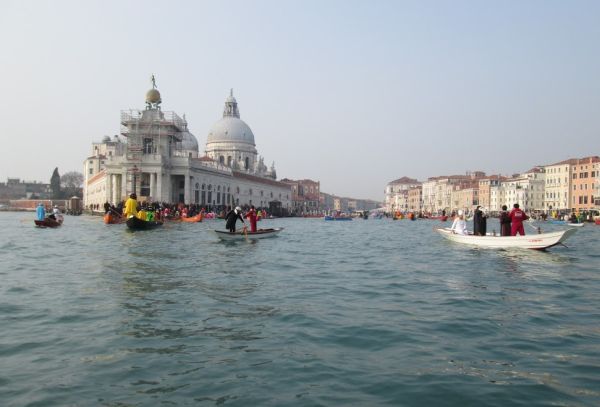
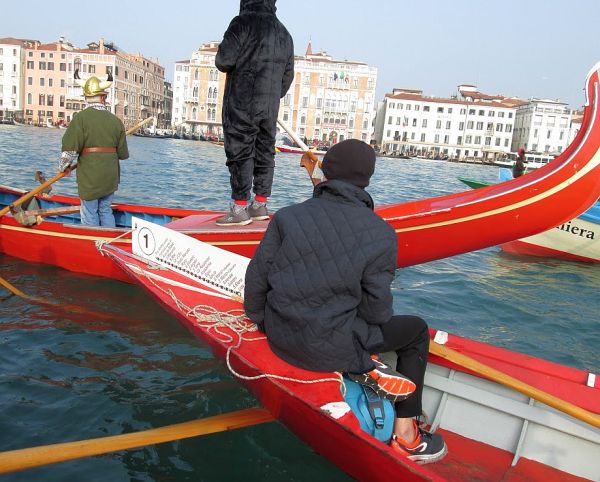

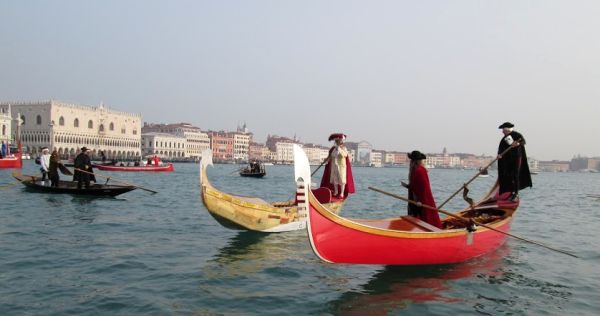
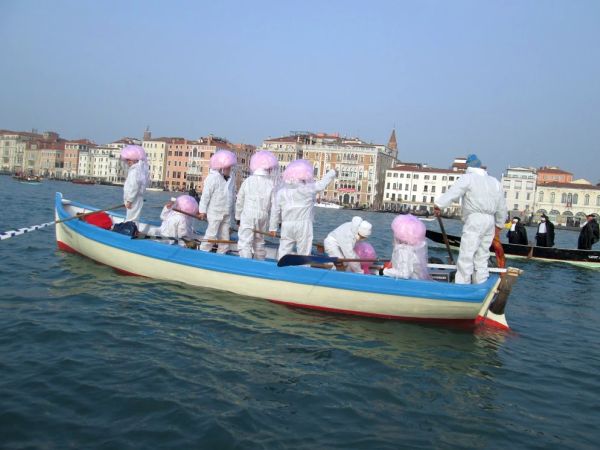
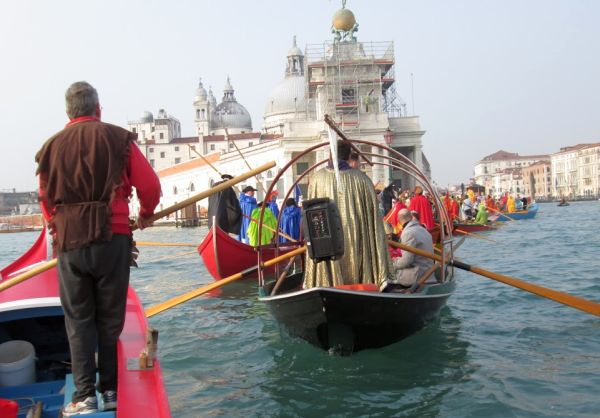

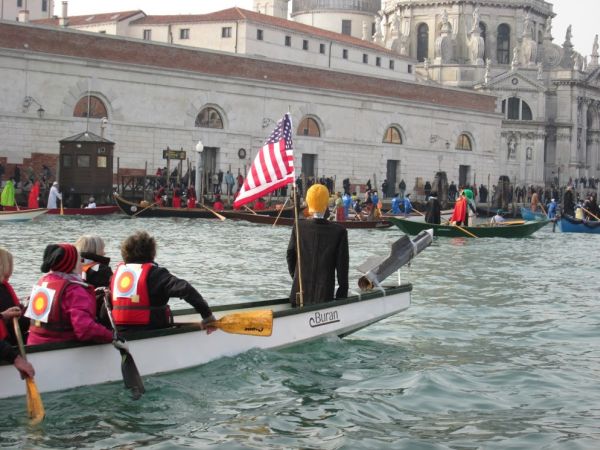
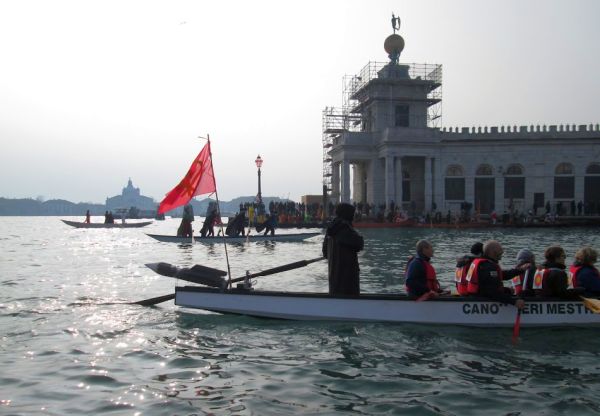
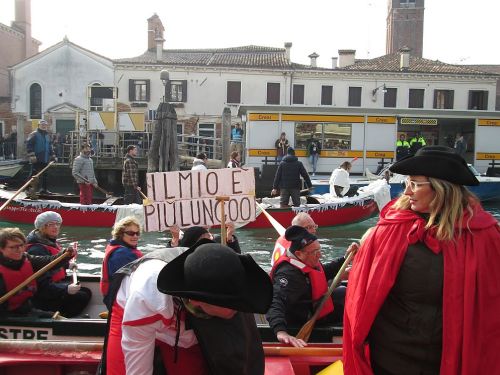
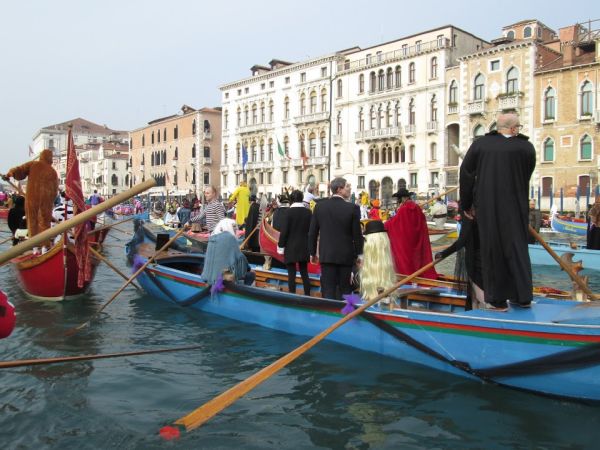
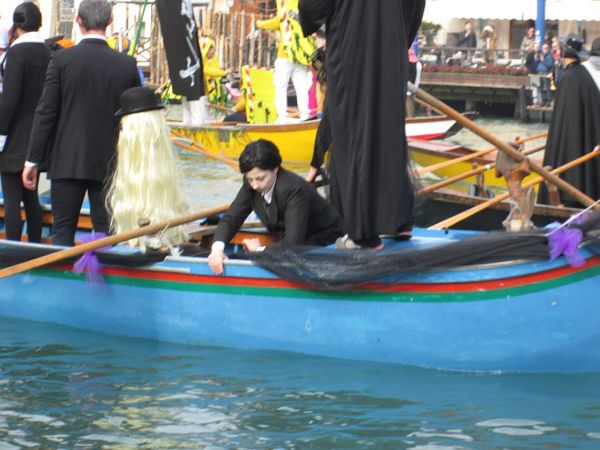
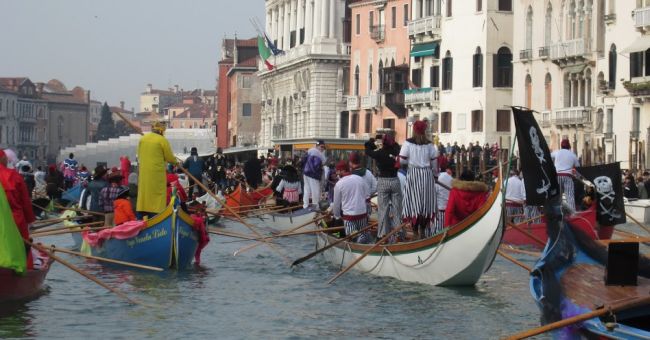


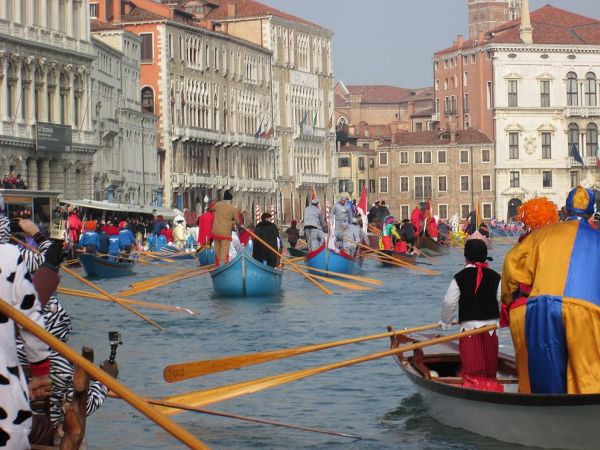
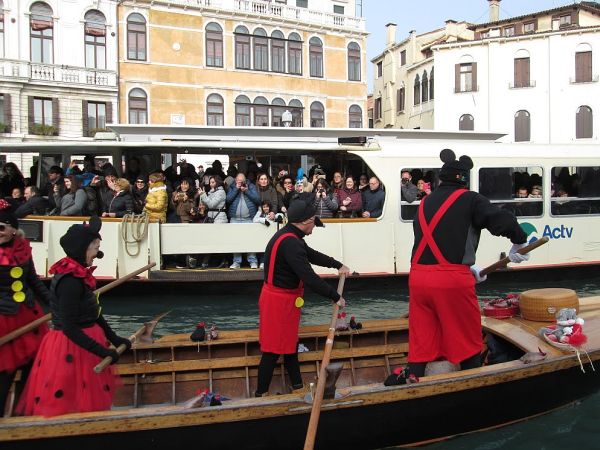
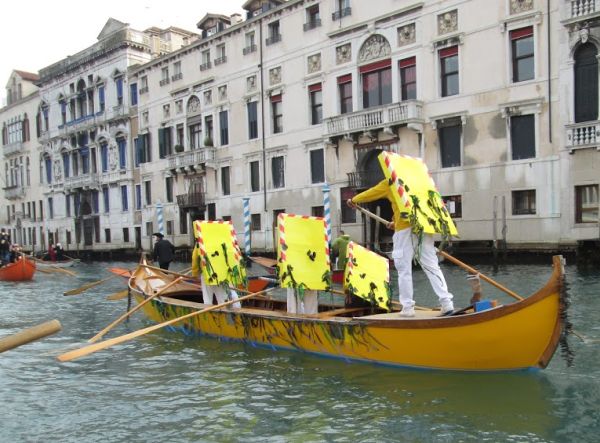

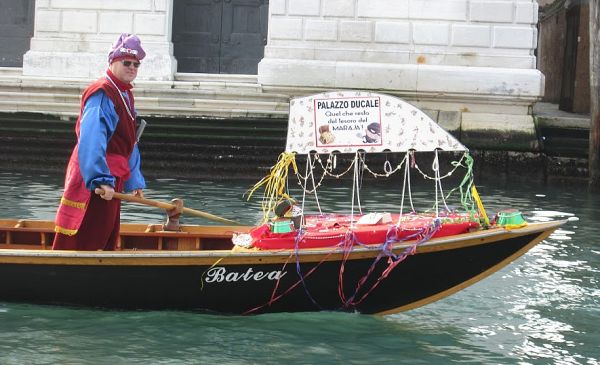
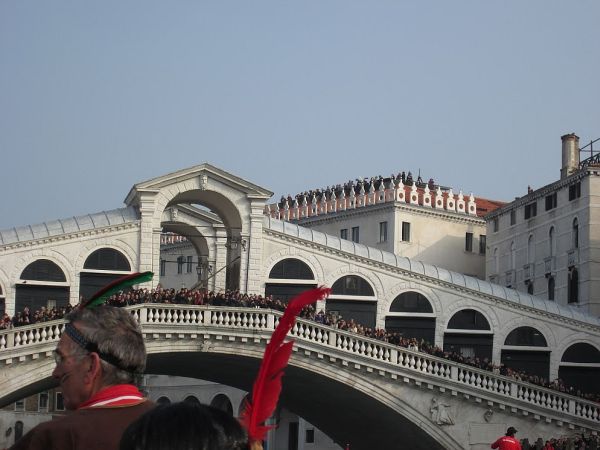
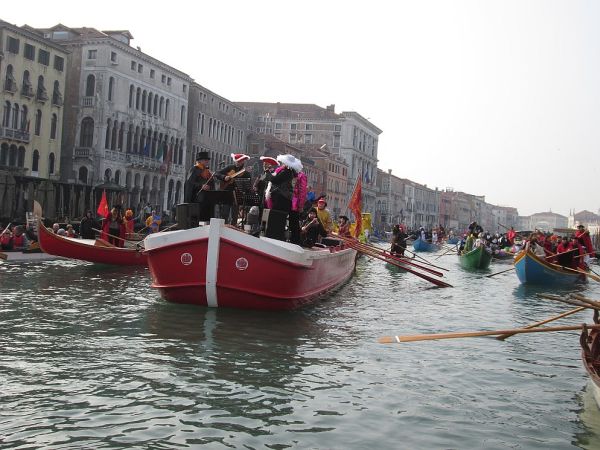

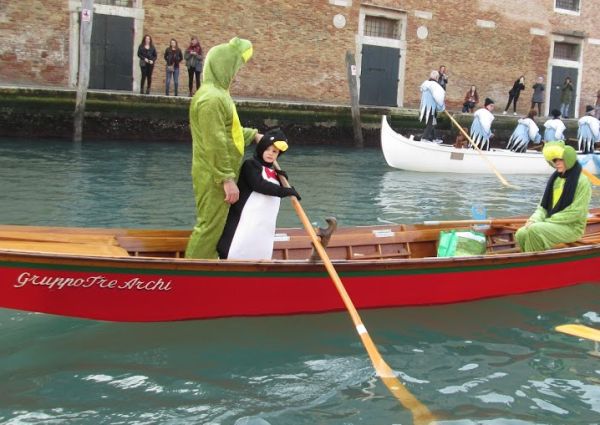
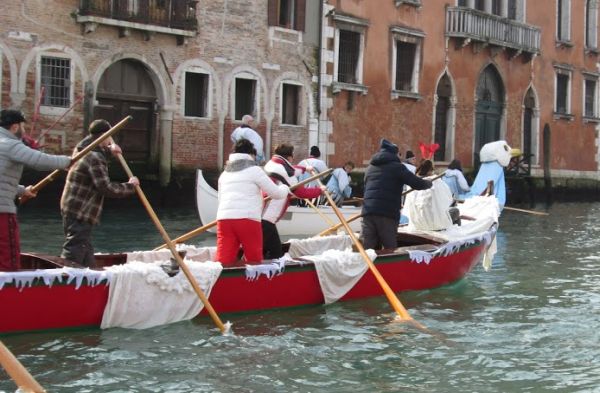
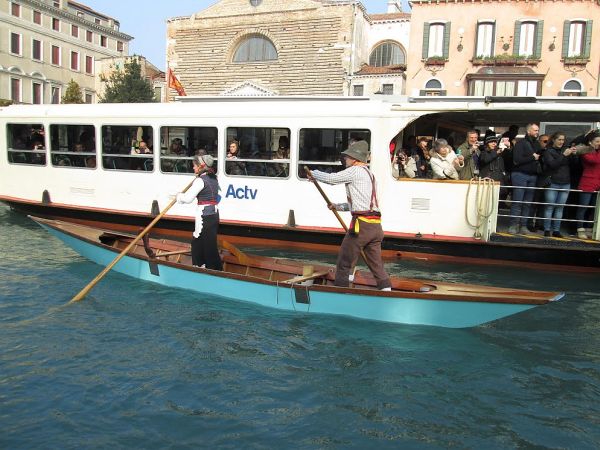

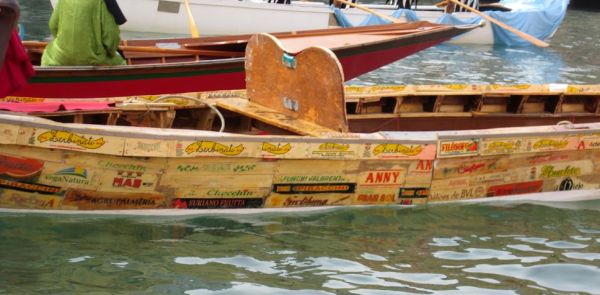
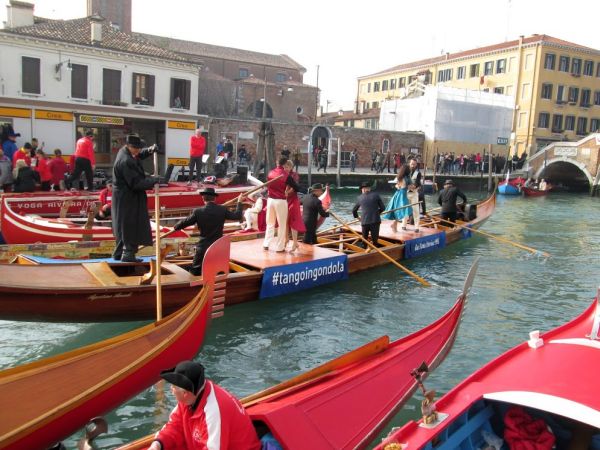

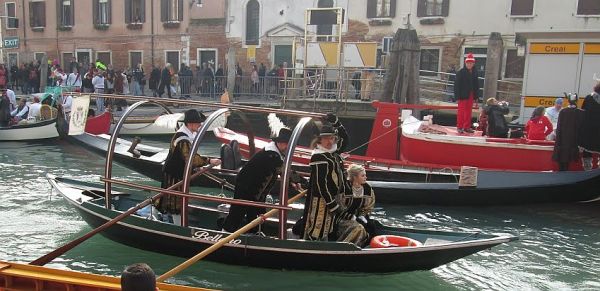
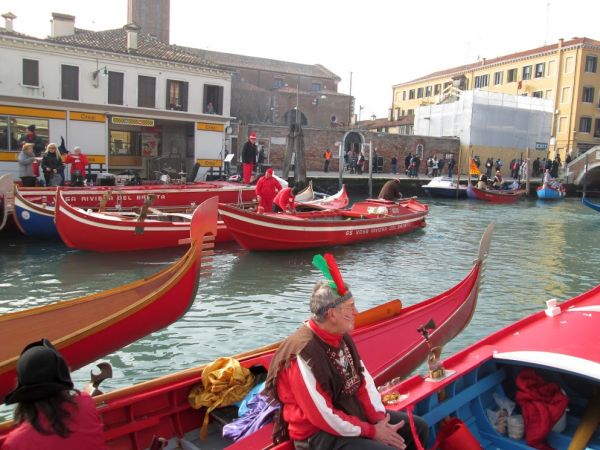
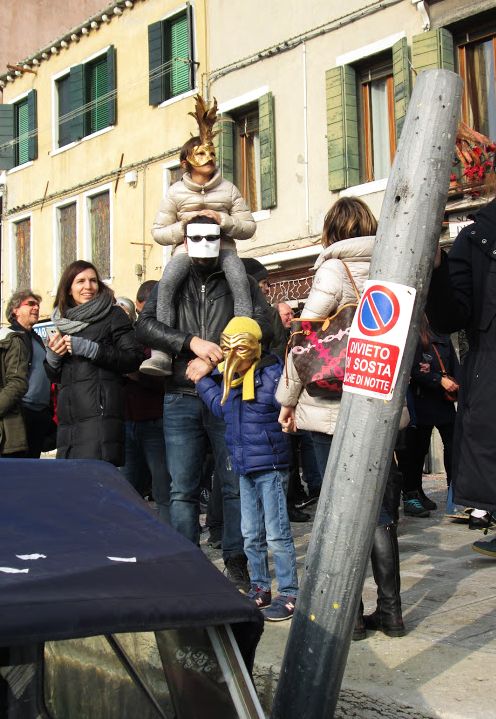

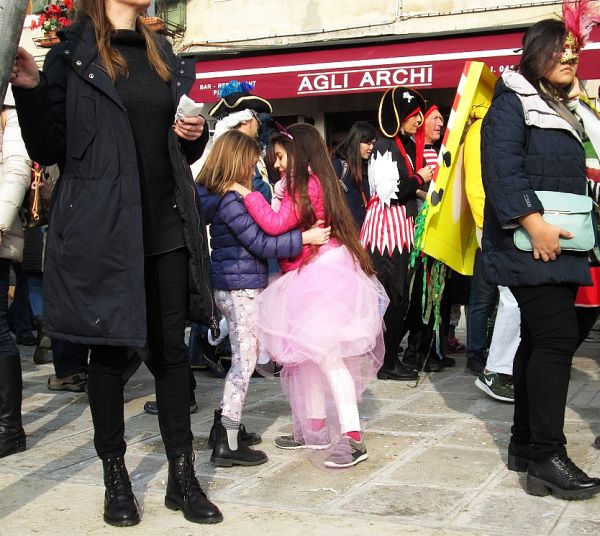
This year Carnival is starting early, thanks to the lunar schedule which governs Easter (January 27 – February 13, if you’re keeping track; two and a half weeks, which seems long, but it’s three weekends, which is what really matters). Therefore we are enjoying a shorter-than-usual interlude of calm and tranquility between Epiphany and the aforementioned Carnival — a mere three weeks, which isn’t nearly long enough to take all those deep breaths you so urgently need. But there’s no arguing with the Paschal Full Moon, counting backwards from, and I imagine the city fathers would be happy for it to run for six months, as it did in the olden days, considering how much lucre spills into the municipal coffers therefrom.
What I am enjoying are the jolly signs of its approach. Here are just a few glances around the neighborhood. And yes, as every year, the frittelle are appearing in the pastry shops, and wild swaths of confetti have already been seen strewn across the pavement. I notice that the garbage-collectors have been sweeping them away. Why? They’re not a health hazard. They’re not a safety hazard. They’re not ugly or offensive. I wouldn’t have thought it possible to find yet another reason to complain about the garbage-collectors-and-sweepers, but I can’t see why they don’t devote whatever small, random spasms of energy they may experience with their brooms to sweeping away real trash, and just leave these merry little fragments of frivolity on the pavement, where they can cheer people up. But so many things perplex me, no point in picking just one.

